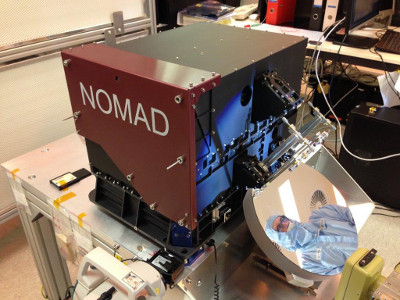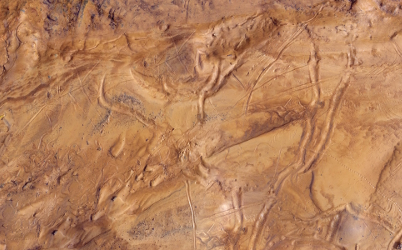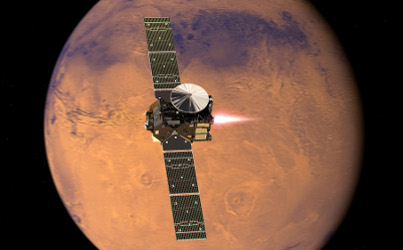Spotlight on Mars
Is there life on Mars? is a question often asked by physicists and the title of a TV series. OU researchers have been addressing this question since the beginning of this century and this is what they have found:

First results from Mars ExoMars mission
The first results from the ExoMars Trace Gas Orbiter mission which launched in 2016, found a surprising lack of methane on Mars. Dr Manish Patel in the Faculty of Science, Technology, Engineering and Mathematics co-leads the NOMAD (Nadir and Occultation for MArs Discovery) instrument which measures the composition of the atmosphere of Mars. Other findings from the mission showed how a global dust storm on Mars had affected the location of water vapour in the atmosphere.

Green glow observed around Mars
In June 2020, a paper co-authored by Dr Manish Patel and Dr Jon Mason reported the detection by the NOMAD instrument of an atmospheric green glow of oxygen surrounding Mars. NOMAD is the first instrument to ever observe the green line and an ultraviolet oxygen emission using the same instrument at the same time – thus settling once and for all the decades-long debate physicists have had between theory and observation of these emissions.

Evidence of water on Mars
In May 2020, Dr Matt Balme in the Faculty of Science, Technology, Engineering and Mathematics, reported the discovery of ancient rivers on Mars. More recently, Dr Manish Patel reported new findings from the ExoMars Trace Gas Orbiter mission, which observed the transport of water vapour and ‘semi-heavy water’ high up into the atmosphere of Mars, providing another clue in answering the mystery of when there could have been life on Mars in its history.

First detection of halogen gas
In February 2021, a paper in Science Advances, co-authored by Dr Manish Patel, reported the first detection of halogen gas (HCI) in the atmosphere of Mars. It was confirmed by the NOMAD instrument aboard the ExoMars Trace Gas Orbiter. The researchers see this as a major advance in their understanding of Martian geo- and photochemistry – confirmation of a new type of chemistry in the atmosphere of Mars.
.jpg)
Plans to bring Mars moon pieces to Earth
A team, led by Dr Manish Patel and Dr Vic Pearson, gave the thumbs up for a new Japanese mission to bring pieces of Mars’ moon back to Earth. The Japanese space mission is going to Phobos, a moon next door to Mars which is likely to contain material ejected from Mars. Their MMX Martian Moons eXplorer Mission – due in the next decade – is planned to land on Phobos, to extract and then return the specimens that they find to Earth.
What do we expect to find next?
In 2021, Dr Patel and colleagues expect to see a revolution in Mars science – and will continue to do great science with the ExoMars Trace Gas Orbiter, along with exciting new global observations of Mars by the Hope spacecraft from the UAE, and the Chinese Tianwen-1 mission. The surface of Mars is also getting a lot busier, with the successful arrival of the NASA Perseverance rover, and the upcoming landing of the Chinese rover. With these new missions, they hope to unravel the mysteries of global weather on present-day Mars, and the habitability of ancient Mars.
Contact our news team
For all out of hours enquiries, please telephone +44 (0)7901 515891
Contact detailsNews & articles

OU study: Transplant athletes match elite performance
A new study led by The Open University’s Professor Bart Rienties, and to be published in Progress in Transplantation in December, reveals that high-intensity transplant athletes can not only meet but greatly exceed existing physical activity guidelines.
